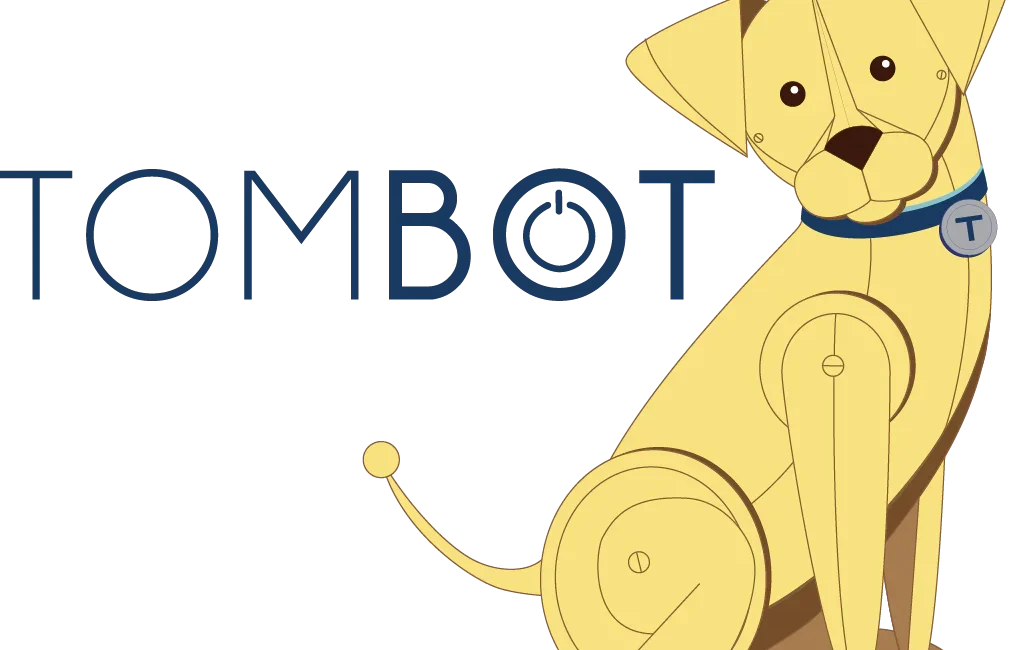Allison interviews Tom Stevens, CEO and Founder of Tombot, about their robotic puppies designed to comfort those with health adversities. The Tombot puppy, Jennie, is very lifelike with fur, eye motion, body movement, and tail wagging modeled after a 3-month-old Labrador puppy. Jennie stays in the owner’s lap and reacts to petting and stroking through sensors around the robot’s body. Jennie also responds to voice commands and makes real puppy sounds. The company consulted with Jim Henson’s Creature Shop to help bring the puppies to life with nuanced expressions and behaviors. Jennie is rechargeable and has a free smartphone app to customize functionality and track user interactions. Software updates will be available as new actions and commands are added. Tombot puppies can be reserved at the link below.
https://tombot.com/pages/meet-our-puppies
Using a Screen Reader? click here
Transcript of Interview:
Allison: Well, I couldn’t possibly walk by a booth that had puppies in it, so I’ve stopped to see Thomas Stevens of TomBot.
Thomas Stevens: Hi, I’m Thomas Stevens. I’m CEO and co-founder of TomBot, and these young ladies are Jenny. Jenny is a fully interactive robotic emotional support animal inspired by my mother, who after she was diagnosed with Alzheimer’s dementia, I had to take away her dog for safety reasons. I looked around for substitutes for live animal companions. My mom hated everything that I brought home, so I realized there was a large gap in the market. Our first product is designed to treat the behavioral and psychological symptoms of dementia and reduce the need for certain medications, including psychotropics. And our aim is for them to be the first puppies that are FDA medical devices.
Allison: So this is audio and video, obviously, but an audio only podcast as well. So I’m looking at two little puppies here that look like little golden puppies, and they’re moving their heads very naturally and look, there’s no uncanny valley here.
Thomas Stevens: Exactly. So one of the things I studied, I went back to school and got a master’s from Stanford before launching the company.
Thomas Stevens: I ended up studying the uncanny valley as part of my focus there.
Thomas Stevens: And what I realized is that we’re, human beings are very sensitive to the uncanny valley as we’re dealing with other humans or humanoids.
Thomas Stevens: Primates have been studied, whether looking at other primates or primate-like things, and the uncanny valley is actually a very real reaction, an fMRI.
Allison: But it’s only between your own species? Like it’s not as weird if it’s a dog?
Thomas Stevens: That was my hypothesis, that it would be, it was prominent in intra-species, but it would not be prominent in ter-species. And so we tested this. We teamed up with Jim Henson’s Creature Shop, the people behind Muppets and Sesame Street. And with their help doing our artistic design, we’ve created multiple generations of high fidelity prototypes to figure out what seniors with dementia wanted. This one over here is actually our fifth generation customer study prototype. But she’s rather fragile. I have to cover her ears when I’m talking about her. She’s rather fragile and can’t pass any of the many safety certifications. So we needed to fully re-engineer her. That’s this one. This is Alpha 2 Jenny. We’re just finishing up our Alpha stage. We’ll be in Beta shortly. And then as soon as the Betas are working the way we want them to, we’ll start fulfilling our backlog of orders.
Allison: So now for the people who are just watching or just listening, these don’t move around. Jenny’s job is to sit in your lap and be petted and make you feel comfort.
Thomas Stevens: Exactly right. So one of the things we learned early on is that anything on the ground presents a fall risk for a senior with dementia. So products in this category are never placed on the ground, which means having the ability to walk or stand up or do things like that actually created a safety hazard. So these are designed as lap dogs, designed to lay comfortably on the senior’s lap, but they’re fully interactive. So covered with sensors, they can feel how and where they’re being touched.
Allison: Oh, really? Oh, I didn’t notice that.
Thomas Stevens: They respond to a long list of voice commands, but only to their name. And we can, through our software app, we can rename the robots. They can feel themselves being moved. So if they’re picked up, they know not to squirm and risk being dropped. And a variety of other sensors to help understand their environment and exhibit a behavior that’s appropriate to their context.
Thomas Stevens: Can you demonstrate something you’re doing that’s changing the behavior of Jenny?
Thomas Stevens: Sure. Let’s just see what’s going on here.
Allison: You just looked under Jenny’s tail.
Thomas Stevens: Is that where the controls are? Yeah, I looked under her tail and saw she was looking at an LED light.
Allison: So, like a real dog then, not going to obey on command, right?
Thomas Stevens: So five mechanical subsystems. The mouth opens and closes, the eyes open and close, ears, head and neck, and tail. And basically the movements are designed to accurately emulate those of an 8 to 10 week old Labrador Retriever puppy.
Allison: The, oh, I said golden, but the ears are perfect.
Thomas Stevens: Thank you.
Allison: The way they move, that is really amazing.
Thomas Stevens: But working with Jim Henson Creature Shop, we got a chance to really study anatomical structures and then try to reproduce those through our mechanical electrical engineering.
Allison: This is really, really interesting.
Thomas Stevens: TomBot.com. T-O-M-B-O-T dot com.
Allison: And I think I heard you say to somebody else, you’re in beta?
Thomas Stevens: We’re just finishing Alpha. These young ladies are at the end of their test period and we’re going to enter into betas.And as soon as the betas are working the way we and our customers want them to, we’ll be starting to fulfill our backlog of orders. We have about 8,000 pre-order and waitlist customers, including over 200 B2Bs, which include the nation’s largest hospital health systems, assisted living, memory care, behavioral health institutions, and so forth.
Allison: This is amazing. Well, I hope these puppies get to, you don’t throw them in a closet when their work is done.
Thomas Stevens: They’ll sit around the office. You should see the museum in my office. It’s getting a little crowded, but these are prominently featured when our engineers allow me to have them, which is for this week, getting them together. But anyway, yeah, we’re very excited. We’ve been very well received in the marketplace and we’re excited to try to get these out into customers’ hands.
Allison: Very cool. I wish you the best of luck.
Thomas Stevens: Thank you so much. Thanks for visiting.


[…] CES 2025: Tombot Robotic Puppies for Those Facing Health Adversities […]